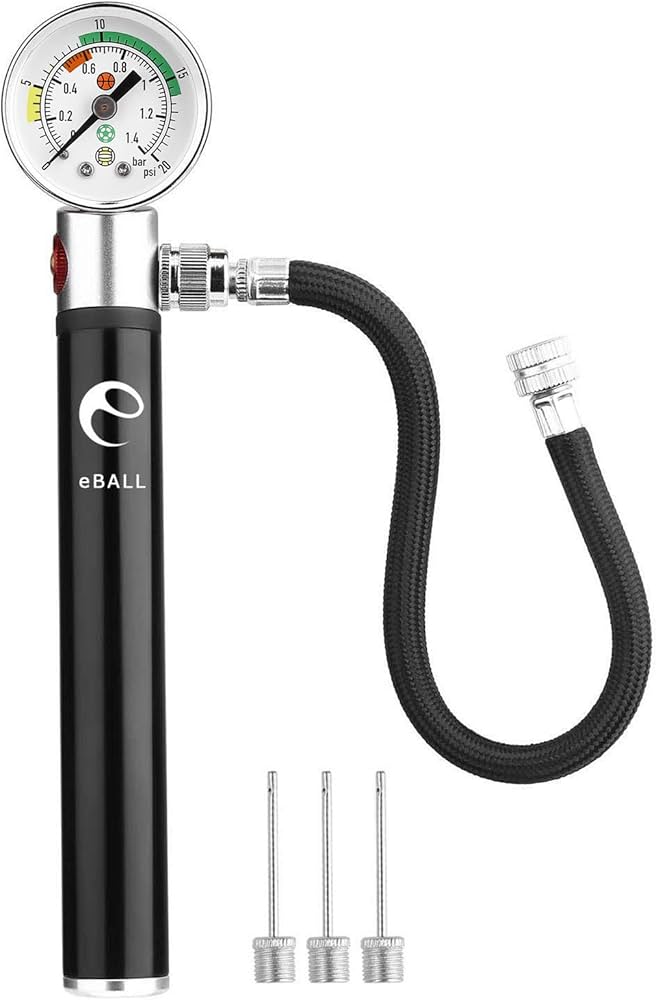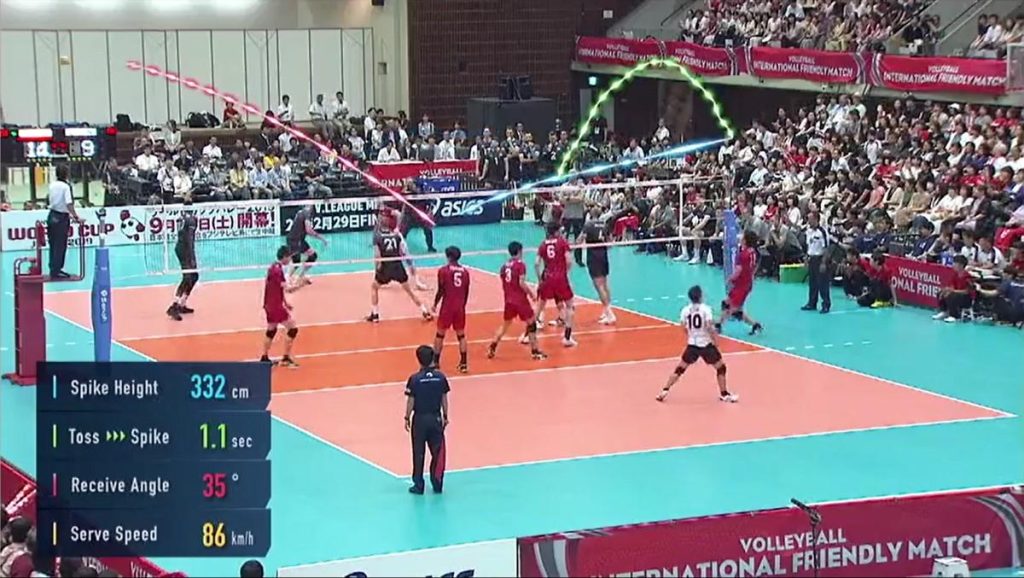To play volleyball well, the ball needs the right pressure. So, how much psi should you pump a volleyball?
The ideal range is between 4. 26 to 4. 61 psi. Knowing the correct psi for a volleyball can improve your game. Too much pressure can make the ball hard and painful to hit. Too little pressure makes the ball difficult to control.
Understanding the perfect psi ensures the ball performs well during play. This guide will explain why the right psi is important and how to achieve it. Whether you play for fun or in competitions, you’ll learn how to keep your volleyball in top shape. Let’s dive in and find out the best psi for your volleyball!

Credit: www.amazon.com
Importance Of Correct Volleyball Pressure
The importance of correct volleyball pressure cannot be overstated. It directly affects gameplay and player safety. Ensuring the right PSI (pounds per square inch) in a volleyball is crucial. Too much or too little air can change the game experience. It can also cause injuries or discomfort for players. Understanding the impact of proper volleyball pressure is essential for every player and coach.
Impact On Gameplay
The right volleyball pressure ensures consistent ball behavior. Properly inflated balls have predictable bounces and flight paths. This consistency is vital for fair play and accurate skills. An under-inflated volleyball may not bounce correctly. It can disrupt the flow of the game. Over-inflated volleyballs can become too rigid. This can make controlling the ball more difficult. Maintaining the correct PSI allows for smooth and enjoyable gameplay.
Player Safety
Correct volleyball pressure also impacts player safety. An over-inflated ball can cause injuries. It can be too hard, leading to sprained fingers or wrists. An under-inflated ball may not provide enough support. This can strain muscles and joints. Using the right PSI helps protect players from unnecessary harm. Safety should always be a top priority in sports.

Credit: www.youtube.com
Understanding Psi And Volleyball
Understanding the correct PSI for a volleyball is crucial. The right PSI ensures the ball performs well during play. It also prevents damage and extends its lifespan. Let’s dive into what PSI means and the standard PSI for volleyballs.
What Is Psi?
PSI stands for pounds per square inch. It measures air pressure in a volleyball. This metric indicates how much air is inside the ball. Proper PSI affects how the ball bounces and moves. Too much or too little air can impact the game.
Standard Psi For Volleyballs
The standard PSI for indoor volleyballs is 4.3 to 4.6 PSI. For beach volleyballs, it ranges from 2.5 to 3.2 PSI. These values ensure optimal performance on different surfaces. Always check the manufacturer’s recommendations. Proper PSI helps maintain control and accuracy during play.
Tools For Measuring Psi
Ensuring the right pressure in your volleyball is key. It affects the game’s quality. Using the right tools makes this task easy. Pressure gauges and digital tools help achieve accurate results.
Pressure Gauges
A pressure gauge is a simple device. It shows the amount of air pressure inside the volleyball. There are various types available. They range from basic analog to advanced digital models.
Analog gauges have a needle that points to the pressure level. Digital gauges display the PSI on a screen. Both types are effective. They just differ in how they show the information.
Manual Vs. Digital Tools
Manual gauges require you to read the dial. They are often cheaper. They don’t need batteries. But they can be less accurate than digital ones.
Digital tools are more precise. They show the exact PSI on a digital display. They are easy to use. You just attach them to the ball and read the number. They may need batteries. But their accuracy makes them worth it.
Here’s a comparison table:
| Type | Pros | Cons |
|---|---|---|
| Manual Gauges |
|
|
| Digital Tools |
|
|
Choosing between manual and digital tools depends on your needs. For casual play, a manual gauge may be fine. For competitive games, a digital tool is better.
Ensure your volleyball is at the right PSI. It helps improve your game experience. Use the right tools to measure it accurately.
Steps To Pump Volleyball To Correct Psi
Pumping your volleyball to the correct PSI is essential for optimal performance. Proper inflation ensures the ball behaves as expected during play. Follow these steps to pump your volleyball to the right PSI.
Preparation
Before you start, gather the necessary equipment. You will need a pump, a needle, and a pressure gauge. Check the recommended PSI range on the volleyball, usually printed near the valve.
Ensure the needle is compatible with the valve on your volleyball. Lubricate the needle with water or a bit of oil. This step prevents damage to the valve.
Inflation Process
- Insert the needle into the valve gently. Avoid forcing it.
- Begin pumping air into the volleyball slowly. Monitor the pressure gauge.
- Pause occasionally and check the PSI. Aim for the recommended range.
- If you overinflate, release some air. Do this by pressing the needle’s tip.
It’s vital to check the pressure periodically. Overinflation can damage the ball, while underinflation affects playability. Use the gauge to ensure accuracy.
Here is a table of recommended PSI ranges for common volleyball types:
| Volleyball Type | Recommended PSI |
|---|---|
| Indoor Volleyball | 4.3 – 4.6 |
| Beach Volleyball | 2.5 – 3.2 |
Once inflated to the correct PSI, your volleyball should be firm but not too hard. It should bounce well and feel comfortable during play.
Common Mistakes And How To Avoid Them
Pumping a volleyball to the right pressure is crucial. Many players make mistakes that affect their performance. Knowing these common mistakes can help you avoid them. Let’s dive into the details.
Overinflation Issues
Overinflation is a common mistake. This happens when you pump too much air into the ball. An overinflated ball can cause several problems.
- Hard to Control: An overinflated ball bounces too much. It becomes hard to control during play.
- Increased Risk of Injury: An overly hard ball can hurt your arms and fingers. It also increases the risk of sprains.
- Damage to the Ball: Too much air can weaken the ball’s seams. It can cause the ball to burst.
To avoid overinflation, follow these tips:
- Use a pressure gauge to check the psi.
- Keep the psi between 4.3 and 4.6, the recommended range.
- Release some air if the ball feels too hard.
Underinflation Problems
Underinflation is another common issue. This occurs when the ball has too little air. An underinflated ball can also lead to problems.
- Poor Performance: An underinflated ball doesn’t bounce well. It affects your playing accuracy.
- Increased Effort: You need more force to hit the ball. This leads to quicker fatigue.
- Ball Damage: An underinflated ball can get misshaped. It reduces the ball’s lifespan.
Here are some tips to avoid underinflation:
- Always check the psi before a game.
- Keep a pump handy to add air if needed.
- Ensure the psi is within the 4.3 to 4.6 range.
Avoid these common mistakes to keep your volleyball in top shape. Proper inflation ensures better performance and longer ball life.

Credit: www.ebay.com
Maintaining Ideal Volleyball Pressure
Maintaining the right pressure in your volleyball is crucial for optimal performance. A properly inflated volleyball ensures better control, consistent bounce, and overall game quality. Let’s dive into the essentials of maintaining the ideal volleyball pressure.
Regular Checks
Regularly checking your volleyball’s pressure is important. Use a pressure gauge to measure the PSI (pounds per square inch). The recommended range is usually between 4.3 to 4.6 PSI. Consistent checks help detect any issues early.
- Check pressure before each game.
- Ensure your gauge is accurate.
- Adjust pressure as needed.
Storage Tips
Proper storage can extend your volleyball’s life. Store it in a cool, dry place. Avoid direct sunlight and extreme temperatures.
Follow these tips for optimal storage:
- Deflate the ball slightly if storing for a long time.
- Keep the ball in a bag to protect it from dust.
- Avoid placing heavy objects on top of the ball.
These practices help maintain the ball’s shape and pressure.
| Condition | Action |
|---|---|
| Overinflated | Release some air to reach 4.3-4.6 PSI |
| Underinflated | Pump air to reach 4.3-4.6 PSI |
Impact Of Weather On Volleyball Pressure
Understanding the impact of weather on volleyball pressure is crucial for players. Weather conditions can significantly affect the ball’s performance. This section explores how temperature and humidity influence volleyball pressure.
Temperature Effects
Temperature changes can alter the pressure inside a volleyball. In hot weather, the air inside the ball expands. This can increase the pressure and make the ball feel harder. Conversely, cold temperatures cause the air to contract. This can lower the pressure and make the ball feel softer. Always check the ball’s pressure before playing, especially during extreme weather conditions.
Humidity Considerations
Humidity levels can also affect volleyball pressure. High humidity can cause the ball to absorb moisture. This can increase the ball’s weight and change its bounce. Low humidity can dry out the ball’s material. This can affect the ball’s grip and flight. Regularly check the ball’s condition to ensure optimal performance in different humidity levels.
Expert Tips For Perfect Volleyball Pressure
Achieving the perfect volleyball pressure is crucial for optimal performance. Proper inflation ensures the ball behaves predictably. This affects your control and the overall game quality. Here are expert tips to help you get it right.
Professional Insights
Experts agree that maintaining the correct pressure is key. The ideal pressure for a volleyball is between 4.26 and 4.61 psi. This range ensures the ball is neither too hard nor too soft. Both extremes can affect play and increase the risk of injury.
Professional players and coaches recommend regular pressure checks. Use a high-quality pressure gauge for accuracy. Consistency is essential. Always check the pressure before games and practices.
Practical Advice
Here are some practical tips to maintain the right volleyball pressure:
- Invest in a reliable air pump with a built-in gauge.
- Check the pressure weekly. Frequent checks help maintain consistent performance.
- If the ball feels too firm or too soft, adjust immediately. A ball should bounce well but not be rock-hard.
- Store the volleyball in a cool, dry place. Extreme temperatures can affect pressure.
Follow these simple steps to keep your volleyball in top condition. Proper pressure makes a big difference in your game. Enjoy smoother play and better control.
Frequently Asked Questions
What Is The Ideal Psi For A Volleyball?
The ideal PSI for a volleyball is typically between 4. 26 and 4. 61. This range ensures optimal performance during play.
How To Check Volleyball Psi?
To check volleyball PSI, use a pressure gauge. Insert the needle into the ball’s valve and read the measurement.
Why Is Proper Psi Important In Volleyball?
Proper PSI ensures the volleyball has the right bounce and flight. It improves gameplay and reduces the risk of injury.
Can Overinflated Volleyballs Affect Performance?
Yes, overinflated volleyballs can be too hard, affecting control and increasing the risk of injury.
Conclusion
Properly inflating a volleyball ensures better performance and safety. Always check the recommended PSI on the ball. Generally, 4. 3 to 4. 6 PSI is ideal. Use a reliable pump and gauge to measure pressure accurately. Over-inflation or under-inflation can affect play and cause damage.
Regularly monitor the PSI to keep the ball in top condition. With the right pressure, your game will be more enjoyable. Happy playing!


